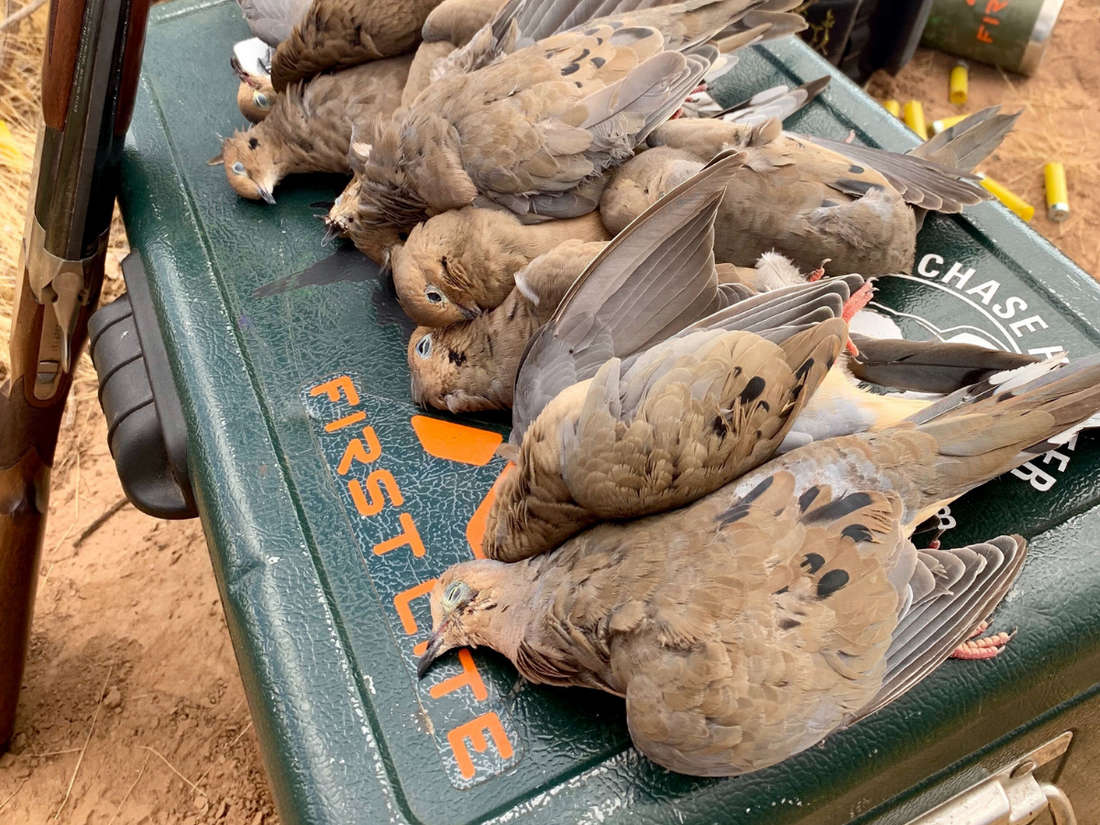It's September 2nd, the day after Arizona's dove opener. Yesterday morning, my alarm tried to wake me up at 4 a.m. After a few hits of the snooze button, it finally succeeded. I made a cup of strong coffee and loaded up my truck with the gear that I had laid out the night before. In no time, I was on the road.
The morning was spent in the company of good friends and even better wing shooting. When I shot the last of my fifteen-bird limit, things were just heating up and doves were flying everywhere. It was quite the spectacle to sit back and watch my friends take in all the action. Almost everyone on that hunt went home with a limit, but before they did, most paused before the drive home to quickly breast out their birds.

Breasting out a dove is a simple way of removing a skinless chunk of breast meat from a dove. This might be the simplest and fastest way to dress out any game species there is. Taking only the breast from a dove is justified for a couple of reasons. In most states, the limit is generous, which can make for a lot of work following a morning’s hunt. Additionally, literally 95 percent of consumable meat on a dove is in the breast. Therefore, this article shouldn’t be viewed as an argument against breasting doves, but rather an argument for plucking and dressing them whole.
Birds are quite durable and age well in the refrigerator. Some would even argue they improve with a little aging. I’ve kept doves and other birds in the fridge up to ten days before processing with no ill effects. I’ll admit, though, that I’ve never noticed a big difference in those I’ve aged and those I’ve eaten fresh. Therefore, my only real excuse for throwing my doves in the fridge after yesterday’s hunt was laziness. While that might be true, it does allow me the ability to rest up and give them the full attention they deserve later on in a clean kitchen with the benefit of running water.

So, if ninety-five percent of the meat is in the breast, why go to the trouble of processing them whole? There are several reasons, so let’s just run down the list. First, it’s easy. Doves are a cinch to pluck, the feathers literally fall off in the hand, and, with a little practice, you can run through a whole limit in no time. After your bird is plucked, use a pair of kitchen shears to cut off the wings, lower legs, and head then, finally make a cut near the cloaca and remove the innards. It really is as simple as that. If the breasting method didn’t exist, doves would still be considered among the easiest game animals to process.
Next, there are dozens of delicious recipes that lend themselves to whole birds. Everyone loves poppers, and I’m no exception, but with the generous limits available to dove hunters, there’s no excuse not to broaden your repertoire of dove recipes. They can be fried, roasted, smoked, stewed, and grilled in a multitude of different ways. One of my favorites is Hank Shaw’s Grilled Doves la Mancha. Check that out at Hank’s Hunt Gather Cook website and over at the Hunt to Eat YouTube channel.
After you’ve dressed, prepared, and eaten your whole doves in an amazing recipe and came to terms with the fact that you’ve been doing it wrong this whole time, don’t stop there! Keep that ball rolling. Once you’ve eaten that last bit of meat off of them, save those bones. A fifteen-bird limit of those seemingly useless little carcasses can provide three full quarts of some amazing stock. Even if you will be using only the breast for kababs or poppers, dove stock still provides more than enough reason to process those bird’s whole. Doves make for a delicious earthy stock that can be used for braising, making rice, or as a wonderful base for soups and stews. I’d be off the mark if I didn’t also mention saving the hearts and gizzards. Sauté these and mix them into a risotto that you’ve made with your dove stock and you’ll be in for a real treat.
This discussion cannot be had without mention of respect for the quarry. There is an argument to be made for showing the harvest the respect it deserves. A dove, although small and numerous, is no less alive than an elk or a bear and it deserves the same respect that we give to any animal that we kill and bring home to our dinner table. This respect can be shown in many ways: fair chase ethics, striving for a quick clean kill, and making the most of the harvest. It’s this last one that is most often overlooked. I wish I could say with a straight face that I make the most of every kill purely due to my superior ethics but that would clearly be a lie.
For me, making the most of an animal that I can doesn’t only make me feel like I’m paying the harvest the respect it deserved, it’s also just plain fun. I love to hunt, I love to immerse myself into, and participate in, the natural world, and I strive to squeeze every last bit of enjoyment out of it that I can. Besides, isn’t the processing, the cooking, and the eating of the animal part of the reward of a successful and whole hunting experience?


